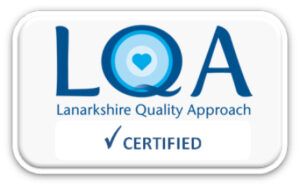Osteoarthritis of the base of the thumb
Information for patients
NHS Lanarkshire Hand Therapy Department
PIL.OSTTMB.21_24171.L
Osteoarthritis of the base of the thumb
Osteoarthritis (OA) is a common condition which affects joints of the body, causing pain and stiffness. Almost anyone can get it but it is more frequent after the age of 40 and in women. The base of the thumb is particularly affected because of its anatomy and because of the high forces on the joint during day to day activities. There are four joints around the base of the thumb but the trapezio-metacarpal is the most frequently affected. OA can’t be cured but most people will be able to control the symptoms so it doesn’t interfere with normal activities. More importantly, early treatment can help to prevent further symptoms and joint damage. Treatment can include medication, to ease the pain, injections into the joints, rehabilitation (hand therapy), self-management techniques and surgery. Non-surgical options are usually the first line of treatment for OA.
Hand Therapy for OA of the base of the thumb:
The initial goal of the treatment will be to decrease your pain and any inflammation. This will usually be achieved by supporting the joint with splints. The hand therapist will also aim to help you regain the movement and strength of your thumb and teach you some exercises to improve its stability, to prevent further damage. You will be taught some self-management techniques to ensure that you maintain your gains and prevent further damage in the future.
Splinting the thumb:
There are various types of splint that can be used to treat OA of the base of the thumb. The main differences are the material (hard or soft) and the joints supported. The therapist will discuss which splint will be the best for you. The choice usually depends on the presence of OA in other joints, the amount of pain and your day to day activities. Many people will need a combination of hard and soft splints.
The goals of the splint are:
- To reduce the inflammation and pain in the joint
- To reduce the displacement of one of the bones at the base of the thumb
- To protect your thumb during certain activities
Initially, you will need to wear your splint on a frequent basis to allow the pain and the inflammation to settle. As you progress, the splint won’t be needed as much. Most people will return to their usual activities but may need the splints once in a while when the symptoms reoccur or for heavy and/or repetitive activities.
Exercises:
Always exercise slowly and gently. Before you start exercising, warm up your hand in a bowl of warm water.
Level 1:
1. Gently move your thumb in a circular direction keeping the tip slightly bent:
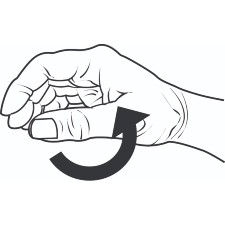
2. Lift your thumb up as far as possible, keeping the tip bent.
If this is too difficult, you may find it easier to lay your hand flat on a table and complete it this way, as shown:
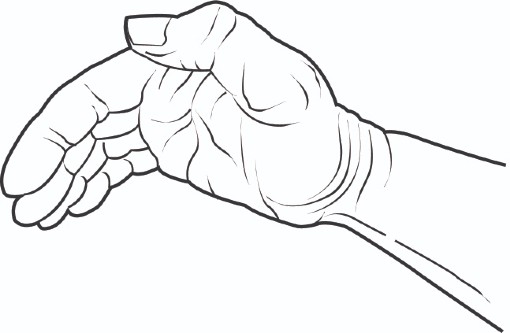
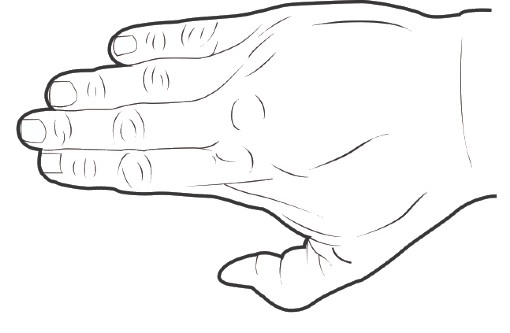
3. Keeping both joints of the thumb slightly bent, move your thumb away from your palm and slightly upwards towards the ceiling.
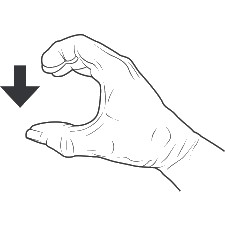
4. Touch the tip of the thumb against the tip of each fingertip, keeping an “O” shape. You may need to use the other hand to hold the position first:

Level 2:
Only progress to level 2 once comfortable with level 1. Remember to warm up in warm water.
5. Place a rubber band around your hand and the middle of your thumb:
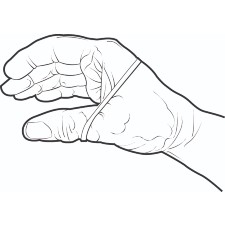
6. Stretch the thumb upwards whilst keeping the thumb joints slightly bent:
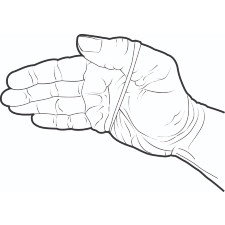
7. Stretch the thumb away from your palm then slowly relax to your starting position. Remember to keep both thumb joints bent:
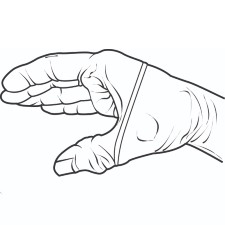
8. Hold a firm ball that contours the arch of the hand, in the position shown, squeeze gently with the whole hand, not just the fingertips:
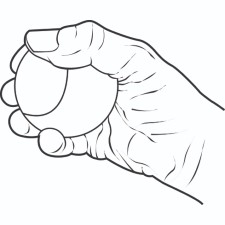
9. Place the thumb in a stable position, with the index and middle fingers lifted off and roll the thumb away from these fingers whilst gently squeezing the ball:
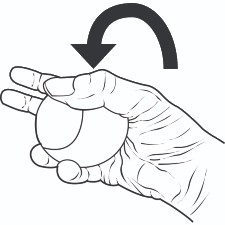
10. Using an elastic band as shown, gently extend and move the index finger away from the middle finger to strengthen the muscle in between the index finger and thumb:
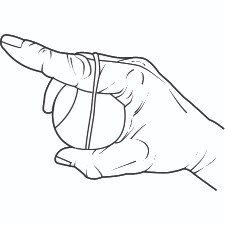
Level 3:
These exercises may be graded by adding sheets of paper, progressing from a side plate to a dinner plate etc. Sharp pain usually occurs when pinching, holding or pressing objects with the tip of the thumb and not necessarily during heavy activities.
This is because the forces applied at the tip of the thumb can be up to 10 times higher at the base of the thumb. Pinching against the side of the index finger makes this worse. Joint protection techniques involve altering the way we perform an activity to protect vulnerable joints.
It is recommended to complete these exercises for up to 10 minutes per session, preferably every other day to avoid over-loading the joints.
Pinch Tasks: practice tasks where you use your thumb to pinch, keeping both joints of the thumb slightly bent, trying not to let them bend backwards:
11. Writing position:
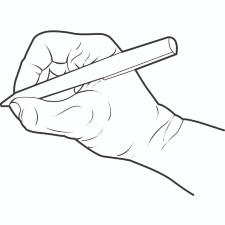
12. Pinching a peg:
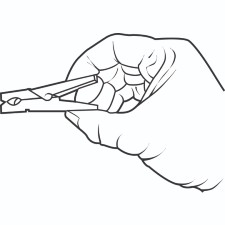
13. Tearing paper:
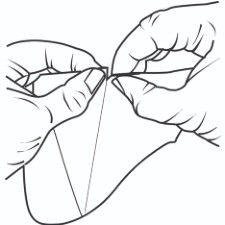
14. Holding a plate:
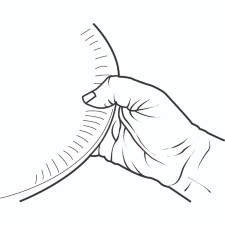
15. Turning a key:
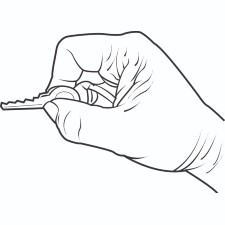
16. Opening a bottle:
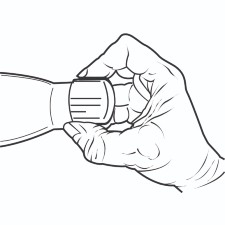
What else can be done?
Medication
Your doctor can prescribe medication to help you deal with your pain.
Steroid Injections
A steroid injection in the joint can help to decrease the symptoms in the short term. Injections may give adverse side effects so they are mainly used when the pain becomes constant. They work best if combined with hand therapy to address the mechanical problems which led to the symptoms.
Surgery
There are various surgical options but the most common is a surgery called trapeziectomy, where the trapezium bone is removed. The surgical options are effective in reducing the pain but involve a lengthy recovery, might decrease your strength and have a higher risk of complications. A surgical fusion, called ‘Arthrodesis’ is another option where the affected joint is pinned to keep it still. The choice of surgical options should be based on how much pain and how much trouble you experience in your day to day activities. Your hand therapist and consultant will be able to advise you on the best treatment options, should you want to consider this.
Further Reading
Please see the ‘Joint Protection’ leaflet for more advice and information.
Versus Arthritis UK
Versus Arthritis UK is a great source of information on all aspects of arthritis.

Pub. date: November 2021
Review date: November 2023
Issue No: 01
Reference: PIL.OSTTMB.21_24171.L
If you need this information in another language or format, please e-mail:
